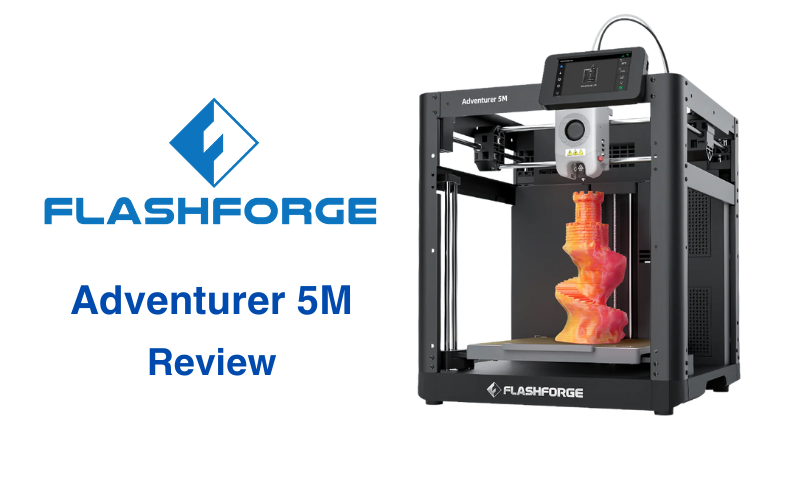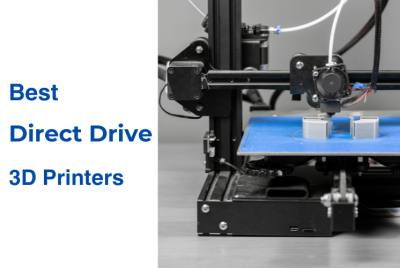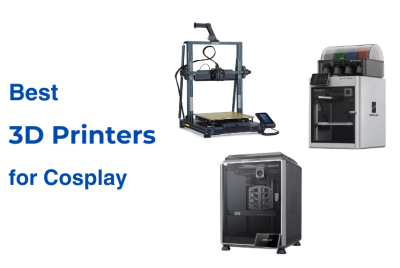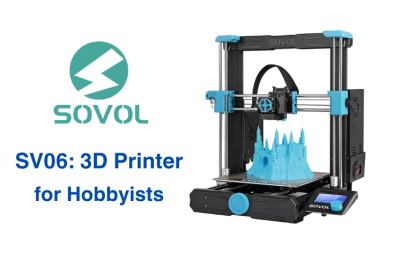Flashforge Adventurer 5M Review
The Flashforge Adventurer 5M is our pick for the Best Under $400 3D printer in the “Best 3D Printer for Beginners” article because it balances simplicity and practical features. Flashforge has been around since 2011, making waves with the Creator—a dual-extruder printer that quickly became popular due to its flexible use at an affordable price. Since then, they’ve developed a broad lineup of printers, from beginner-friendly models to advanced machines for professionals.
The Adventurer series was introduced to make 3D printing easier for newcomers, and it’s become known for being straightforward and dependable. The Adventurer 5M continues that trend, including upgrades like improved filament handling and a user-friendly interface while keeping the price under $400. It’s designed for anyone who wants to start 3D printing without unnecessary complications.
In this review, we’ll take a closer look at what makes the Adventurer 5M unique, how it compares to earlier Adventurer models, and how it performs in everyday projects.
Design and Build Quality
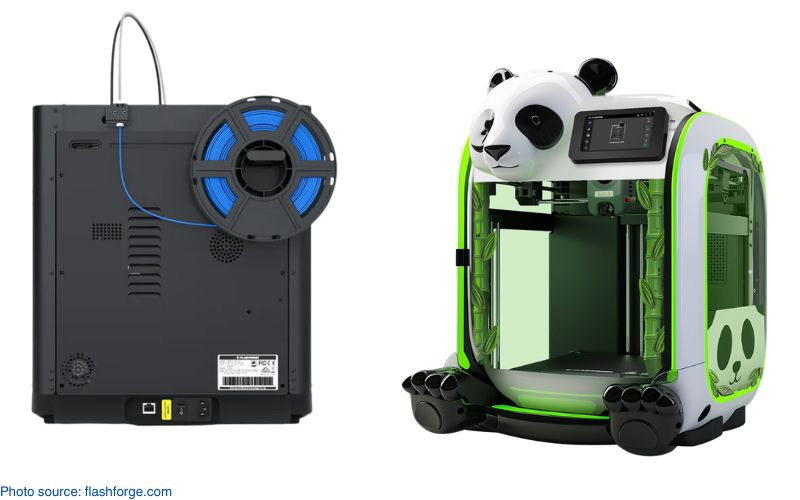
The Flashforge Adventurer 5M has a compact footprint, measuring 363 x 376 x 413 mm, with a build volume of 220 x 220 x 220 mm. This size accommodates everyday printing tasks while fitting comfortably on a standard desk. The enclosed frame keeps the printer sturdy but it doesn’t look bulky. Not to mention fun and creative designs of the official enclosures. They help maintain stable print conditions while keeping hot components safely out of reach. One of the biggest perks is that it arrives 95% pre-assembled, so there’s not much to do before you can start printing. The flexible, removable PEI steel plate makes removing prints much easier, especially if you’re working on something with tricky edges.
It’s also quieter than you’d expect for a machine of this size, so it’s a good choice for workrooms or classrooms where noise can be a distraction. All in all, it’s designed to make 3D printing more straightforward and easy.
Key Features and Specifications
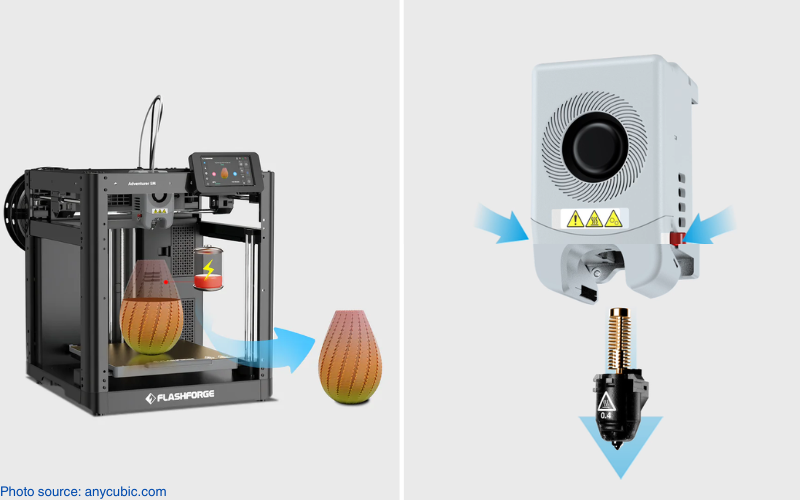
| Key Features | Specifications |
|---|---|
| High-Speed Printing | Printing Technology: FDM |
| Upgraded Direct Extruder | Build Volume: 220 x 220 x 220 mm |
| Quick-Release Nozzle System | Print Speed: Up to 600 mm/s |
| Dual-sided PEI-Coated Steel Plate | Layer Resolution: 100 to 400 microns |
| Multiple Connectivity Options | Nozzle Diameter: standard: 0.4 mm optional: 0.25 mm, 0.6 mm, 0.8 mm |
| User-Friendly 4.3-inch Touchscreen Display | Maximum Nozzle Temperature: 280°C |
| Resume Printing Function | Heated Bed Temperature: Up to 110°C |
| Pre-Assembled Design | Filament Compatibility: PLA, PETG, TPU, PLA-CF, PETG-CF |
| Connectivity: Wi-Fi, USB, Ethernet |
The Flashforge Adventurer 5M is built to make 3D printing as straightforward as possible. Since it comes pre-assembled, you can have it up and running quickly—no tricky setup steps needed. The flexible, removable PEI-coated steel plate keeps prints securely in place during the job. It also makes removal simple once they’re done, even for prints with detailed edges.
Its open design makes it easy to load filament and keep an eye on your prints. The 4.3-inch touchscreen is responsive and user-friendly, so adjusting print settings or checking progress is a breeze. The quick-release nozzle system also makes switching between different nozzle sizes painless, which is handy if you’re working with multiple filament types.
You also get multiple ways to send files, with Wi-Fi, USB, and Ethernet options available. Plus, with a maximum print speed of up to 600 mm/s, it’s built to handle fast jobs while maintaining smooth, consistent quality.
Comparisons
Flashforge Adventurer 5M vs Creality Ender 3 S1
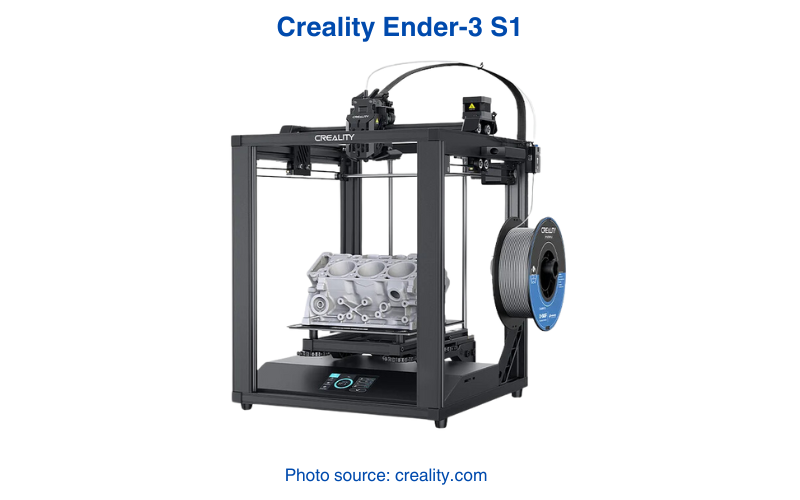
The Adventurer 5M and Ender 3 S1 are built for different types of users. The Adventurer 5M is all about fast, straightforward printing. The Ender 3 S1, on the other hand, is more about flexibility for those who like to customize their setup.
- Printing System: The Adventurer 5M uses a CoreXY system with a direct drive extruder, making it steady during fast prints. The Ender 3 S1 also has a direct drive setup. But its standard Cartesian design isn’t quite as optimized for high-speed movements.
- Build Volume: The Adventurer 5M’s build area is 220 x 220 x 220 mm. While the Ender 3 S1 stretches a bit taller at 220 x 220 x 270 mm. It’s handy if you plan to print taller models.
- Auto-Leveling: Both printers have auto-leveling. The Adventurer 5M has a one-click, fully automatic system. Meanwhile, the Ender 3 S1’s CR Touch system may need occasional adjustments.
- Material Compatibility: Both printers handle PLA, PETG, and TPU well. The Ender 3 S1 can print ABS too, but since it’s not enclosed, you might have issues with temperature-sensitive materials.
- Print Speed: The Adventurer 5M is built for speed, hitting up to 600 mm/s. The Ender 3 S1 maxes out at 150 mm/s—plenty for most prints but not as fast as the Adventurer 5M.
Flashforge Adventurer 5M vs Anycubic Kobra Neo
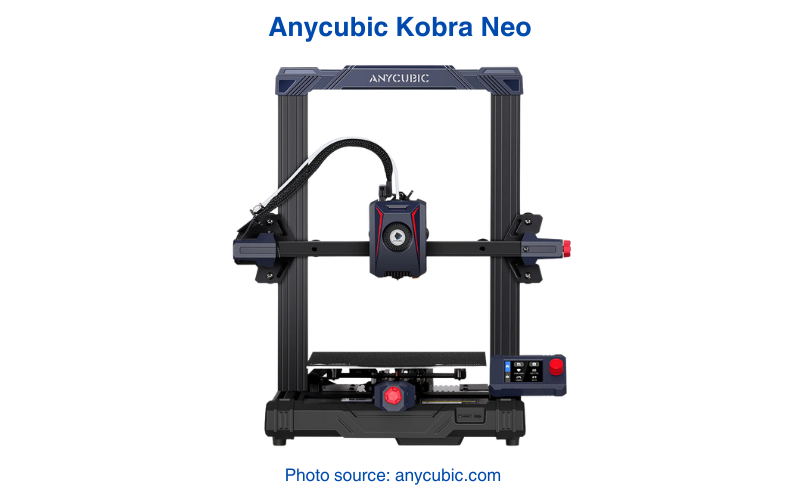
The Adventurer 5M and Kobra Neo are beginner-friendly printers with different strengths. The Adventurer 5M focuses on convenience and speed, while the Kobra Neo sticks to the basics at a lower price point.
- Printing System: The Adventurer 5M’s CoreXY system with a direct drive extruder makes it great for flexible materials like TPU. The Kobra Neo uses a Bowden extruder, which prints quickly but isn’t ideal for softer filaments.
- Build Volume: Both printers have a 220 x 220 x 220 mm build area—plenty of space for everyday projects.
- Material Compatibility: Both printers handle common filaments like PLA and PETG. The Kobra Neo can print ABS too, thanks to its heated bed. Though the open frame is not ideal for ABS prints.
- Print Speed: The Adventurer 5M reaches up to 600 mm/s, which is much faster than the Kobra Neo’s typical 150 mm/s speed.
Real World Applications
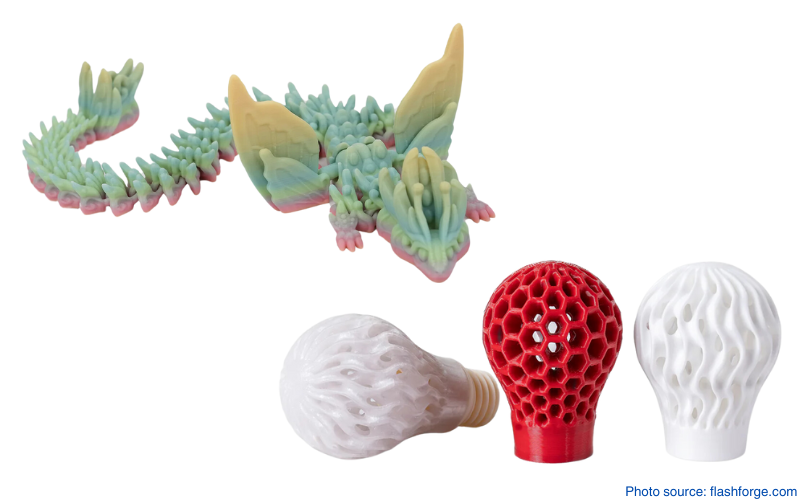
The Flashforge Adventurer 5M is a dependable 3D printer that’s quick, easy to use, and built for different tasks. Here’s how it’s capable in different applications:
- Prototyping and Design: The Adventurer 5M makes the process smoother with its fast print speeds and reliable auto-leveling. Its CoreXY motion system helps maintain accuracy, so you can print parts quickly without spending time on constant adjustments.
- Educational Use: The pre-assembled design and automatic calibration is a great setup for classrooms. Students can get started quickly, and the enclosed build makes it more safe by keeping hot components out of reach. Plus, its quiet operation means it won’t interrupt lessons or other activities.
- Cosplay Accessories: For props, small armor pieces, or decorative details, the Adventurer 5M’s direct drive extruder and multiple nozzle options help with both fine details and faster prints. The enclosed build helps keep temperature-sensitive materials from warping, so you can print larger pieces more consistently.
Final Notes
The Flashforge Adventurer 5M is a great pick if you want a 3D printer that’s simple to use and quick to set up. The one-click auto-leveling makes calibration a breeze, and the CoreXY system keeps things steady, even at higher speeds. Its enclosed design helps with consistent prints and adds a layer of safety—perfect for home setups or classrooms. With a 220 x 220 x 220 mm build volume, it’s big enough for most everyday prints. The flexible PEI-coated plate makes removing your finished prints easy, and since it comes mostly pre-assembled, you’ll be up and running in no time. You also get Wi-Fi, USB, and cloud printing options, so sending files is simple, no matter what device you’re using.
If you want a 3D printer that lets you focus on printing instead of troubleshooting, the Adventurer 5M gets the job done without the extra hassle.

